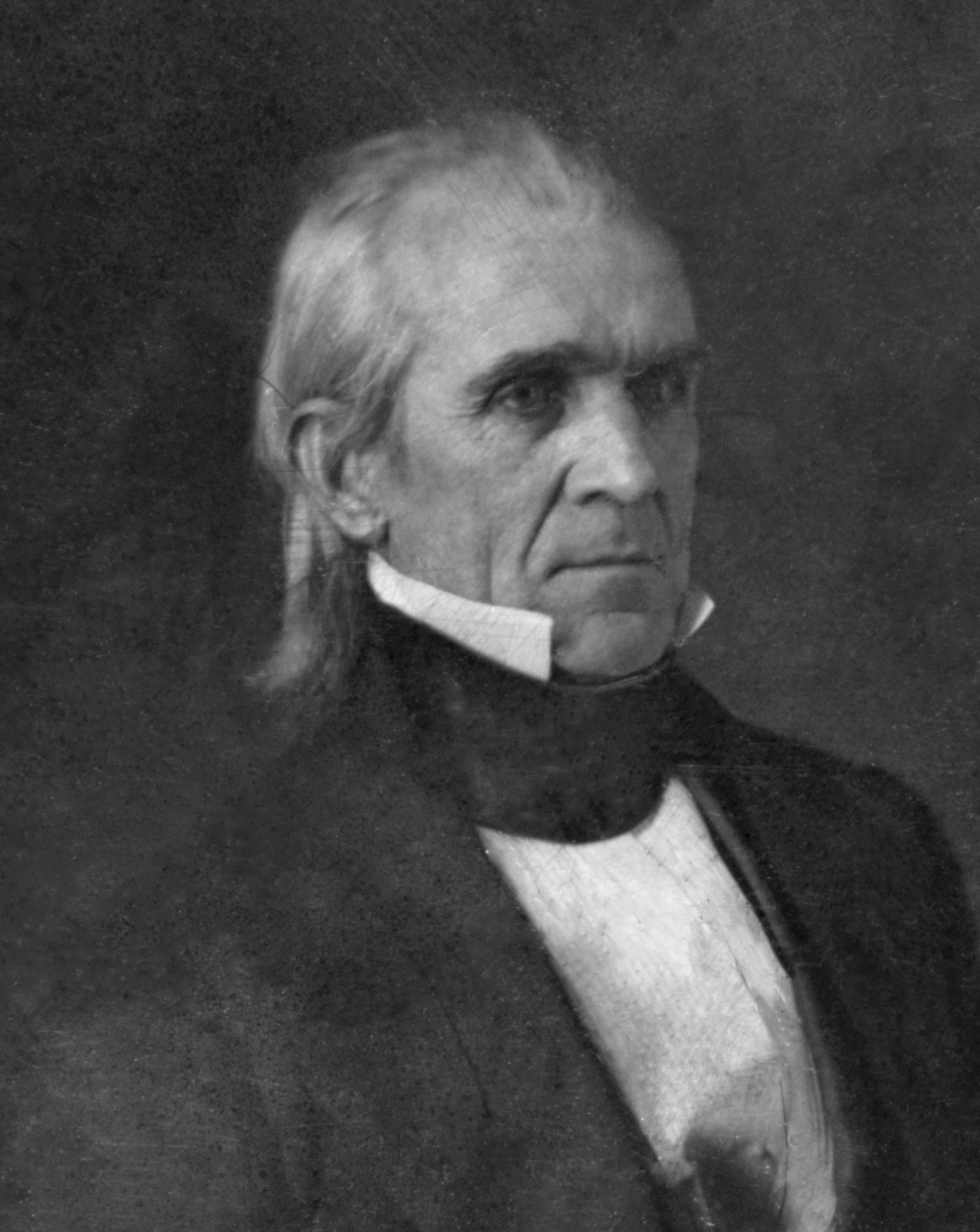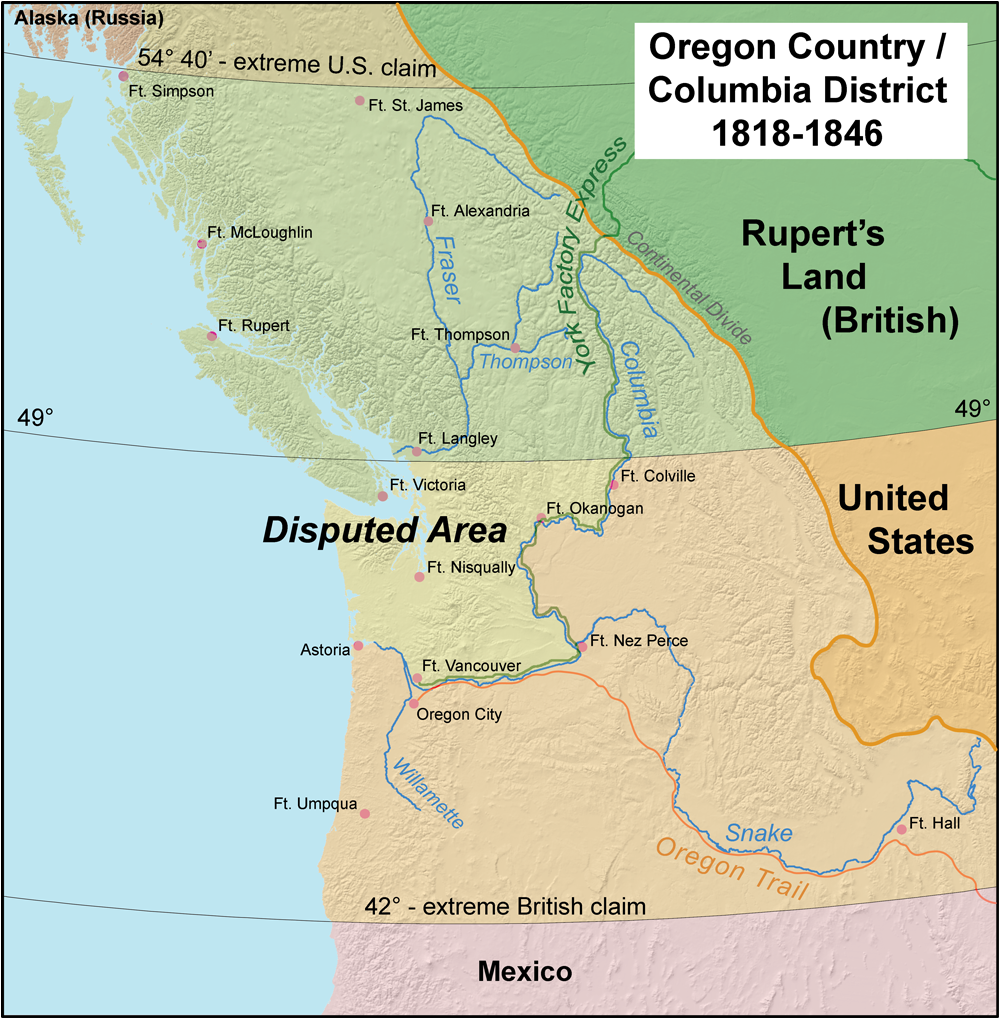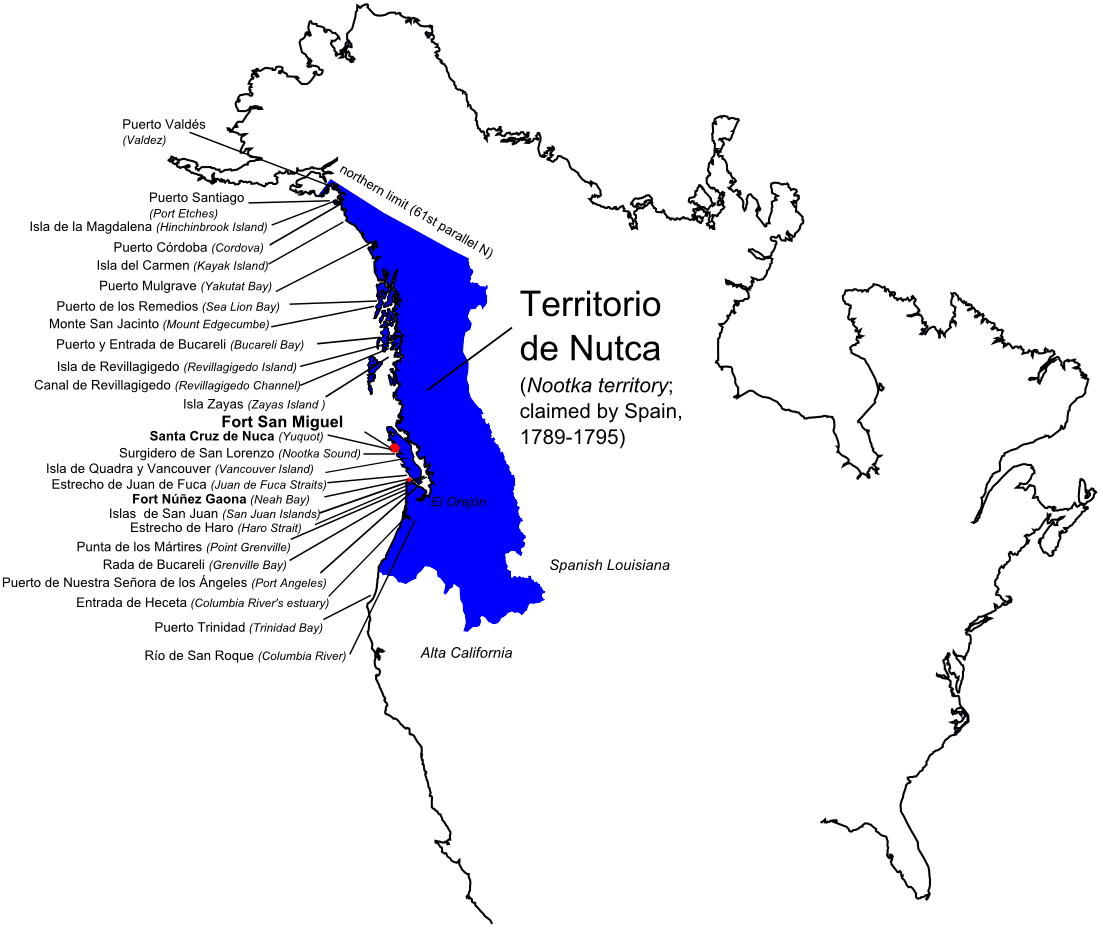|
U.S. Presidential Election, 1844
The 1844 United States presidential election was the 15th quadrennial presidential election, held from Friday, November 1 to Wednesday, December 4, 1844. Democrat James K. Polk defeated Whig Henry Clay in a close contest turning on the controversial issues of slavery and the annexation of the Republic of Texas. This is the only election where both major party nominees served as Speaker of the House at one point. President John Tyler's pursuit of Texas annexation divided both major parties. Annexation would geographically expand American slavery. It also risked war with Mexico while the United States engaged in sensitive possession and boundary negotiations with the Great Britain, which controlled Canada, over Oregon. Texas annexation thus posed both domestic and foreign policy risks. Both major parties had wings in the North and the South, but the possibility of the expansion of slavery threatened a sectional split in each party. Expelled by the Whig Party after vetoing ... [...More Info...] [...Related Items...] OR: [Wikipedia] [Google] [Baidu] |
Electoral College (United States)
The United States Electoral College is the group of presidential electors required by the Constitution to form every four years for the sole purpose of appointing the president and vice president. Each state and the District of Columbia appoints electors pursuant to the methods described by its legislature, equal in number to its congressional delegation (representatives and senators). Federal office holders, including senators and representatives, cannot be electors. Of the current 538 electors, an absolute majority of 270 or more ''electoral votes'' is required to elect the president and vice president. If no candidate achieves an absolute majority there, a contingent election is held by the United States House of Representatives to elect the president, and by the United States Senate to elect the vice president. The states and the District of Columbia hold a statewide or districtwide popular vote on Election Day in November to choose electors based upon how they have p ... [...More Info...] [...Related Items...] OR: [Wikipedia] [Google] [Baidu] |
Texas Annexation
The Texas annexation was the 1845 annexation of the Republic of Texas into the United States. Texas was admitted to the Union as the 28th state on December 29, 1845. The Republic of Texas declared independence from the Republic of Mexico on March 2, 1836. It applied for annexation to the United States the same year, but was rejected by the Secretary of State. At the time, the vast majority of the Texian population favored the annexation of the Republic by the United States. The leadership of both major U.S. political parties, the Democrats and the Whigs, opposed the introduction of Texas, a vast slave-holding region, into the volatile political climate of the pro- and anti-slavery sectional controversies in Congress. Moreover, they wished to avoid a war with Mexico, whose government had outlawed slavery and refused to acknowledge the sovereignty of its rebellious northern province. With Texas's economic fortunes declining by the early 1840s, the President of the Texas Rep ... [...More Info...] [...Related Items...] OR: [Wikipedia] [Google] [Baidu] |
Oregon Boundary Dispute
The Oregon boundary dispute or the Oregon Question was a 19th-century territorial dispute over the political division of the Pacific Northwest of North America between several nations that had competing territorial and commercial aspirations in the region. Expansionist competition into the region began in the 18th century, with participants including the Russian Empire, Great Britain, Spain, and the United States. After the War of 1812, the Oregon dispute took on increased importance for diplomatic relations between the British Empire and the fledgling American republic. In the mid-1820s, the Russians signed the Russo-American Treaty of 1824 and the Russo-British Treaty of 1825, and the Spanish signed the Adams–Onís Treaty of 1819, by which Russia and Spain formally withdrew their respective territorial claims in the region, and the British and the Americans acquired residual territorial rights in the disputed area. But the question of sovereignty over a portion of the N ... [...More Info...] [...Related Items...] OR: [Wikipedia] [Google] [Baidu] |
Manifest Destiny
Manifest destiny was a cultural belief in the 19th-century United States that American settlers were destined to expand across North America. There were three basic tenets to the concept: * The special virtues of the American people and their institutions * The mission of the United States to redeem and remake the West in the image of the agrarian East * An irresistible destiny to accomplish this essential duty Historians have emphasized that "manifest destiny" was always contested; many endorsed the idea, but the large majority of Whigs and many prominent Americans (such as Abraham Lincoln and Ulysses S. Grant) rejected the concept. Historian Daniel Walker Howe writes, "American imperialism did not represent an American consensus; it provoked bitter dissent within the national polity while the ''Whigs'' saw America's moral mission as one of democratic example rather than conquest. The term was used by the then-Democrats in the 1840s to justify the Mexican–American Wa ... [...More Info...] [...Related Items...] OR: [Wikipedia] [Google] [Baidu] |
Dark Horse
A dark horse is a previously lesser-known person or thing that emerges to prominence in a situation, especially in a competition involving multiple rivals, or a contestant that on paper should be unlikely to succeed but yet still might. Origin The term began as horse racing parlance for a race horse that is unknown to gamblers and thus difficult to establish betting odds for. The first known mention of the concept is in Benjamin Disraeli's novel '' The Young Duke'' (1831). Disraeli's protagonist, the Duke of St. James, attends a horse race with a surprise finish: "A dark horse which had never been thought of, and which the careless St. James had never even observed in the list, rushed past the grandstand in sweeping triumph." Politics The concept has been used in political contexts in such countries as Iran, Philippines, Russia, Egypt, Finland, Canada, the United Kingdom, and the United States. Politically, the concept came to the United States in the nineteenth century when i ... [...More Info...] [...Related Items...] OR: [Wikipedia] [Google] [Baidu] |
Governor Of Tennessee
The governor of Tennessee is the head of government of the U.S. state of Tennessee. The governor is the only official in Tennessee state government who is directly elected by the voters of the entire state. The current governor is Bill Lee, a member of the Republican Party, who took office on January 19, 2019. Qualifications The Tennessee Constitution provides that the governor must be at least 30 years old and must have lived in the state for at least seven years before being elected to the office. The governor is elected to a four-year term and may serve no more than two terms consecutively. The governor is the only official of the Tennessee state government who is directly elected by the voters of the State of Tennessee. Judges on several state courts also appear on statewide ballots, but in accordance with the Tennessee Plan they are subject to votes only on their retention in office. There are only two other U.S. states, New Jersey and Hawaii, where the governor is the ... [...More Info...] [...Related Items...] OR: [Wikipedia] [Google] [Baidu] |
1844 Democratic National Convention
The 1844 Democratic National Convention was a presidential nominating convention held in Baltimore, Maryland from May 27 through 30. The convention nominated former Governor James K. Polk of Tennessee for president and former Senator George M. Dallas of Pennsylvania for vice president. Though his opposition to the annexation of Texas cost him support with expansionists and Southerners, former President Martin Van Buren entered the convention with the backing of a majority of the delegates. Before presidential balloting commenced, the convention voted to reinstate a rule requiring the presidential nominee to win two-thirds of the vote. On the first presidential ballot, Van Buren won a simple majority of the vote, but fell short of a two-thirds majority. As the balloting continued, Van Buren continually lost support to former Governor Lewis Cass of Michigan, former Vice President Richard Mentor Johnson of Kentucky, and Senator James Buchanan of Pennsylvania. Though he had enter ... [...More Info...] [...Related Items...] OR: [Wikipedia] [Google] [Baidu] |
Andrew Jackson
Andrew Jackson (March 15, 1767 – June 8, 1845) was an American lawyer, planter, general, and statesman who served as the seventh president of the United States from 1829 to 1837. Before being elected to the presidency, he gained fame as a general in the United States Army and served in both houses of the U.S. Congress. Although often praised as an advocate for ordinary Americans and for his work in preserving the union of states, Jackson has also been criticized for his racial policies, particularly his treatment of Native Americans. Jackson was born in the colonial Carolinas before the American Revolutionary War. He became a frontier lawyer and married Rachel Donelson Robards. He served briefly in the United States House of Representatives and the United States Senate, representing Tennessee. After resigning, he served as a justice on the Tennessee Supreme Court from 1798 until 1804. Jackson purchased a property later known as the Hermitage, becoming a wealthy ... [...More Info...] [...Related Items...] OR: [Wikipedia] [Google] [Baidu] |
Martin Van Buren
Martin Van Buren ( ; nl, Maarten van Buren; ; December 5, 1782 – July 24, 1862) was an American lawyer and statesman who served as the eighth president of the United States from 1837 to 1841. A primary founder of the Democratic Party, he served as New York's attorney general, U.S. senator, then briefly as the ninth governor of New York before joining Andrew Jackson's administration as the tenth United States secretary of state, minister to the United Kingdom, and ultimately the eighth vice president of the United States when named Jackson's running mate for the 1832 election. Van Buren won the presidency in 1836, lost re-election in 1840, and failed to win the Democratic nomination in 1844. Later in his life, Van Buren emerged as an elder statesman and an important anti-slavery leader who led the Free Soil Party ticket in the 1848 presidential election. Van Buren was born in Kinderhook, New York, where most residents were of Dutch descent and spoke Dutch as their ... [...More Info...] [...Related Items...] OR: [Wikipedia] [Google] [Baidu] |
Southern United States
The Southern United States (sometimes Dixie, also referred to as the Southern States, the American South, the Southland, or simply the South) is a geographic and cultural region of the United States of America. It is between the Atlantic Ocean and the Western United States, with the Midwestern and Northeastern United States to its north and the Gulf of Mexico and Mexico to its south. Historically, the South was defined as all states south of the 18th century Mason–Dixon line, the Ohio River, and 36°30′ parallel.The South . ''Britannica.com''. Retrieved June 5, 2021. Within the South are different subregions, such as the |
Northern United States
The Northern United States, commonly referred to as the American North, the Northern States, or simply the North, is a geographical or historical region of the United States. History Early history Before the 19th century westward expansion, the "Northern United States" corresponded to the present day New England region. By the 1830s it corresponded to the present day Northeast and Great Lakes region. Before 1865, the North was distinguished from the South on the issue of slavery. In Southern states, slavery was legal until the ratification of the 13th Amendment in 1865. Northern states had all passed some form of legislation to abolish slavery by 1804. However, abolition did not mean freedom for some existing slaves. Due to gradual abolition laws, slaves would still appear in some Northern states as far as the 1840 United States Census. New Jersey was the last Northern state to end slavery. Due to their states gradual abolition laws, slavery came to an end in New Jersey when th ... [...More Info...] [...Related Items...] OR: [Wikipedia] [Google] [Baidu] |
Oregon Country
Oregon Country was a large region of the Pacific Northwest of North America that was subject to a long dispute between the United Kingdom and the United States in the early 19th century. The area, which had been created by the Treaty of 1818, consisted of the land north of 42°N latitude, south of 54°40′N latitude, and west of the Rocky Mountains down to the Pacific Ocean and east to the Continental Divide. Article III of the 1818 treaty gave joint control to both nations for ten years, allowed land to be claimed, and guaranteed free navigation to all mercantile trade. However, both countries disputed the terms of the international treaty. Oregon Country was the American name while the British used Columbia District for the region. British and French Canadian fur traders had entered Oregon Country prior to 1810 before the arrival of American settlers from the mid-1830s onwards, which led to the foundation of the Provisional Government of Oregon. Its coastal areas north from ... [...More Info...] [...Related Items...] OR: [Wikipedia] [Google] [Baidu] |


.jpg)
.jpg)


